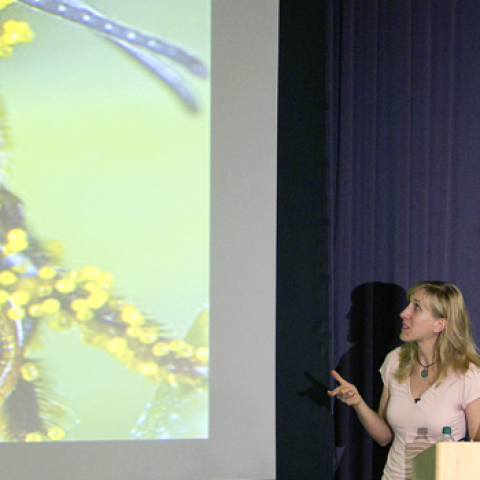Interdisciplinary Initiatives Program Round 8 - 2016
Jennifer Dionne, Materials Science & Engineering
Miriam Goodman, Molecular & Cellular Physiology
Cells and their constituents constantly push and pull on their surroundings, generating and sensing forces that dictate whether a cell is healthy or will become diseased. We experience these forces every time our heart beats, our ears hear, or a wound heals. Mechanical forces also affect gene expression, stem-cell differentiation, ion-channel gating, synaptic plasticity, and tissue organization. Despite the prevalence and significance of biological forces, few tools exist to directly measure these forces, and instead rely on biochemical, molecular, or genetic information to infer biological function and fate. This proposal will develop a new class of in vivo force probes to monitor picoNewton to microNewton biological forces with extremely high spatial and temporal resolution. Our design is based on inorganic nanoparticles that, when excited in the near-infrared, emit light of a different color (wavelength) and intensity in response to tensile or compressive strain. The nanoparticles are bio-compatible, do not bleach or photoblink, need not be genetically encoded, and, by virtue of their infrared absorption, can enable deep tissue imaging with minimal tissue autofluorescence and light-induced tissue damage. We will design, fabricate and deploy these nanoparticles in C. elegans to generate high-resolution in vivo force maps. In particular, we will focus on the forces generated by these tiny roundworms as they feed and digest their bacterial food, to visualize how digestive tract forces vary across space and time. These force measurements will be coupled with electrical measurements of muscle contractions in both wild-type and mutant animals. Such experiments will provide a foundation for understanding the interplay between tissue force generation and other biological rhythms and clocks, such as vertebrate heart beating or breathing, and will also provide key insight into neuromuscular coordination. Our optical force reporter will accelerate fundamental discoveries about intra- and inter-cellular force signaling and serve as a new diagnostic tool for a variety of diseases.



